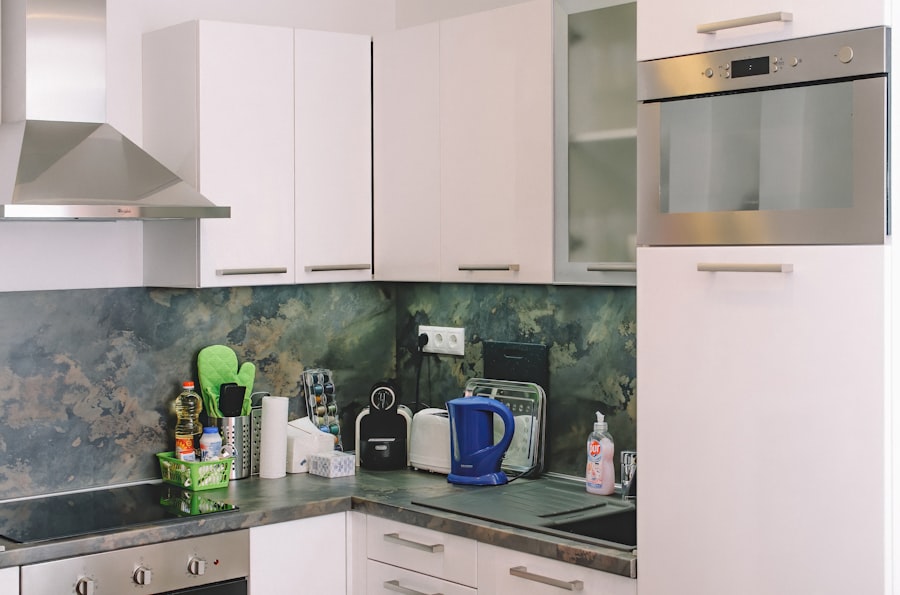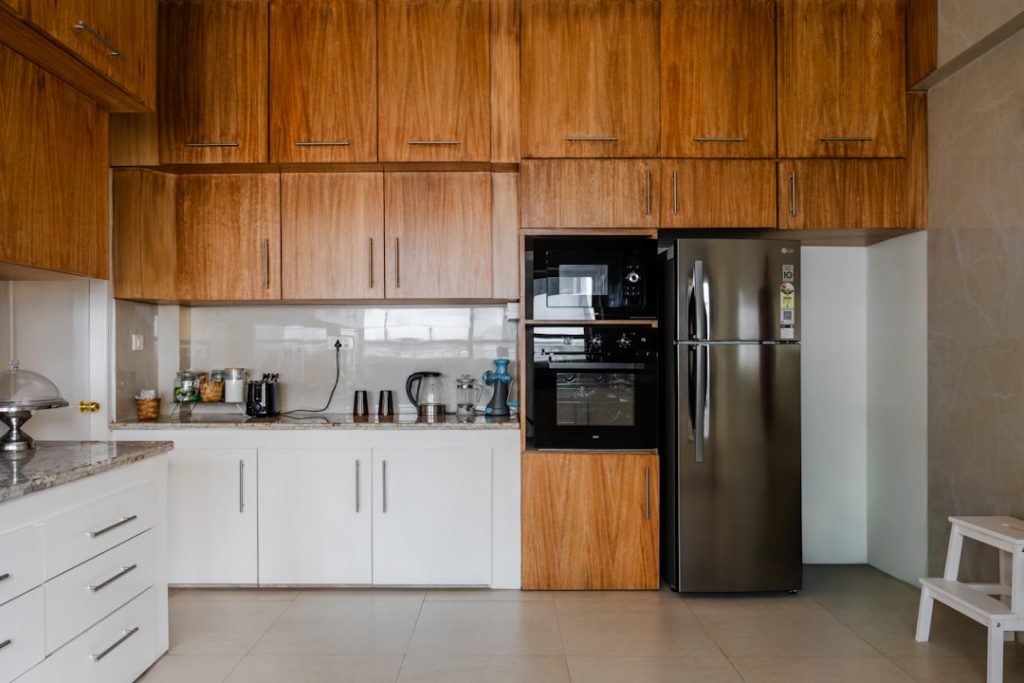When embarking on a kitchen renovation, one of the most significant investments homeowners make is in custom kitchen cabinets. The cost of these cabinets can vary widely based on several factors, each contributing to the overall price tag. One primary factor is the size of the kitchen and the amount of cabinetry required.
A larger kitchen necessitates more materials and labor, which can significantly increase costs. Additionally, the layout of the kitchen plays a crucial role; complex designs that require more intricate cabinetry can lead to higher expenses. Another critical factor influencing the cost is the choice of materials.
Different woods, finishes, and hardware can dramatically alter the price. For instance, high-quality hardwoods like cherry or walnut are typically more expensive than softer woods like pine or MDF. Furthermore, the finish applied to the cabinets—whether it’s a simple stain or a multi-step paint process—can also add to the overall cost.
Customization options, such as unique shapes or specialized storage solutions, further complicate pricing, as they often require additional craftsmanship and time.
Key Takeaways
- Material selection significantly influences the overall cost of custom kitchen cabinets.
- More complex designs and extensive customization increase expenses.
- Labor and installation fees are key components of the total cost.
- Custom cabinets generally cost more than stock or semi-custom alternatives but offer greater personalization.
- Careful budgeting and strategic choices can help maximize value while controlling costs.
Material Choices and Their Impact on Cost
The selection of materials is one of the most pivotal decisions when it comes to custom kitchen cabinets. Solid wood is often considered the gold standard for cabinetry due to its durability and aesthetic appeal. However, it comes with a higher price point.
For example, oak and maple are popular choices that offer a balance between cost and quality, while exotic woods like mahogany or teak can push prices even higher due to their rarity and desirability. In contrast, engineered materials such as plywood or particleboard can provide a more budget-friendly alternative without sacrificing too much in terms of appearance or functionality. These materials are often used in conjunction with veneers that mimic the look of solid wood, allowing homeowners to achieve a high-end look at a fraction of the cost.
It’s essential to consider not only the initial cost but also the long-term durability and maintenance requirements of each material. For instance, while laminate finishes may be less expensive upfront, they may not withstand wear and tear as well as solid wood options.
Design Complexity and Customization Options

The complexity of the design is another significant factor that influences the cost of custom kitchen cabinets. Simple, straightforward designs with standard dimensions are generally less expensive than intricate layouts that require specialized craftsmanship. For example, cabinets with elaborate moldings, curved fronts, or unique shapes will demand more time and skill from craftsmen, thereby increasing labor costs.
Customization options also play a vital role in determining price. Homeowners may choose to incorporate features such as pull-out shelves, built-in lighting, or specialized storage solutions like spice racks or wine holders. Each of these additions not only enhances functionality but also adds to the overall cost.
The more tailored the design to meet specific needs or preferences, the higher the price tag is likely to be. This level of customization allows for a unique kitchen that reflects personal style but requires careful consideration of budget constraints.
Labor and Installation Costs
| Category | Unit | Cost | Time Required | Notes |
|---|---|---|---|---|
| Electrician Labor | Per Hour | 50 | 4 hours | Includes wiring and connections |
| Plumber Labor | Per Hour | 45 | 3 hours | Installation of piping and fixtures |
| Carpenter Labor | Per Hour | 40 | 5 hours | Framing and structural work |
| Installation Materials | Per Project | 300 | N/A | Includes fasteners and adhesives |
| Site Preparation | Per Project | 150 | 2 hours | Clearing and leveling |
Labor costs are an essential component of the overall expense associated with custom kitchen cabinets. Unlike stock cabinets that can be purchased off-the-shelf and installed quickly, custom cabinets require skilled artisans for both construction and installation. The craftsmanship involved in creating bespoke cabinetry often means higher labor rates due to the expertise required.
This can include everything from precise measurements to intricate joinery techniques that ensure durability and aesthetic appeal. Installation costs can also vary based on the complexity of the project. A straightforward installation in a standard kitchen may be relatively quick and inexpensive, while a more complicated layout with multiple angles or built-in features will require additional time and labor.
Moreover, if structural changes are needed to accommodate new cabinetry—such as altering walls or plumbing—these factors will further increase labor costs. Homeowners should factor in these potential expenses when budgeting for their custom kitchen cabinet project.
Additional Features and Accessories
In addition to basic cabinetry, many homeowners opt for additional features and accessories that enhance both functionality and aesthetics in their kitchens. These can include soft-close hinges, pull-out drawers, integrated lighting systems, and decorative hardware. Each of these elements adds convenience and style but also contributes to the overall cost of custom cabinets.
For instance, soft-close mechanisms prevent slamming doors and drawers, providing a quieter kitchen experience but at an added expense compared to standard hardware. Similarly, built-in lighting can illuminate workspaces effectively but requires additional electrical work and planning during installation. Accessories such as drawer dividers or pull-out trash bins may seem minor but can significantly enhance organization and usability in a busy kitchen environment.
Homeowners should carefully consider which features are essential for their lifestyle versus those that may be more luxurious but not necessary.
Comparing the Cost of Custom Cabinets to Stock or Semi-Custom Options

When evaluating kitchen cabinetry options, it’s crucial to compare custom cabinets with stock or semi-custom alternatives. Stock cabinets are pre-manufactured in standard sizes and styles, making them significantly less expensive than custom options. They are readily available at home improvement stores and can be installed quickly; however, they often lack the unique features and personalized touches that custom cabinets provide.
Semi-custom cabinets offer a middle ground between stock and fully custom options. They come in a variety of styles and finishes but still allow for some degree of customization in terms of size and layout. While they are generally more affordable than fully custom cabinets, they may not offer the same level of quality or craftsmanship as bespoke options.
Homeowners should weigh their priorities—whether it’s budget constraints or a desire for a unique design—when deciding between these different types of cabinetry.
Budgeting and Financing for Custom Kitchen Cabinets
Creating a budget for custom kitchen cabinets requires careful planning and consideration of all associated costs. Homeowners should start by determining their overall budget for the kitchen renovation project and then allocate a portion specifically for cabinetry. It’s essential to account for not only the cost of materials and labor but also any additional features or accessories that may be desired.
Financing options can also play a significant role in making custom cabinetry more accessible. Many homeowners choose to finance their renovations through personal loans or home equity lines of credit (HELOCs). These options allow for spreading out payments over time rather than paying upfront costs entirely out-of-pocket.
Additionally, some cabinet manufacturers offer financing plans that can make purchasing custom cabinets more manageable within a homeowner’s budget.
Tips for Maximizing Value and Minimizing Costs
To maximize value while minimizing costs when investing in custom kitchen cabinets, homeowners should consider several strategies. First, thorough research is essential; comparing quotes from multiple cabinet makers can help identify competitive pricing without sacrificing quality. Engaging with local artisans who specialize in custom cabinetry may yield better prices than larger manufacturers due to lower overhead costs.
Another effective strategy is to prioritize essential features over luxury additions. While it may be tempting to include every possible accessory, focusing on what will genuinely enhance functionality can help keep costs down. Additionally, opting for simpler designs with fewer intricate details can reduce both material and labor expenses while still achieving an attractive look.
Finally, being open to alternative materials or finishes can lead to significant savings without compromising on style. For instance, choosing a less expensive wood species or opting for a high-quality laminate instead of solid wood can provide an appealing aesthetic at a lower price point. By carefully considering these factors and making informed decisions throughout the process, homeowners can achieve their dream kitchen while staying within budget constraints.



